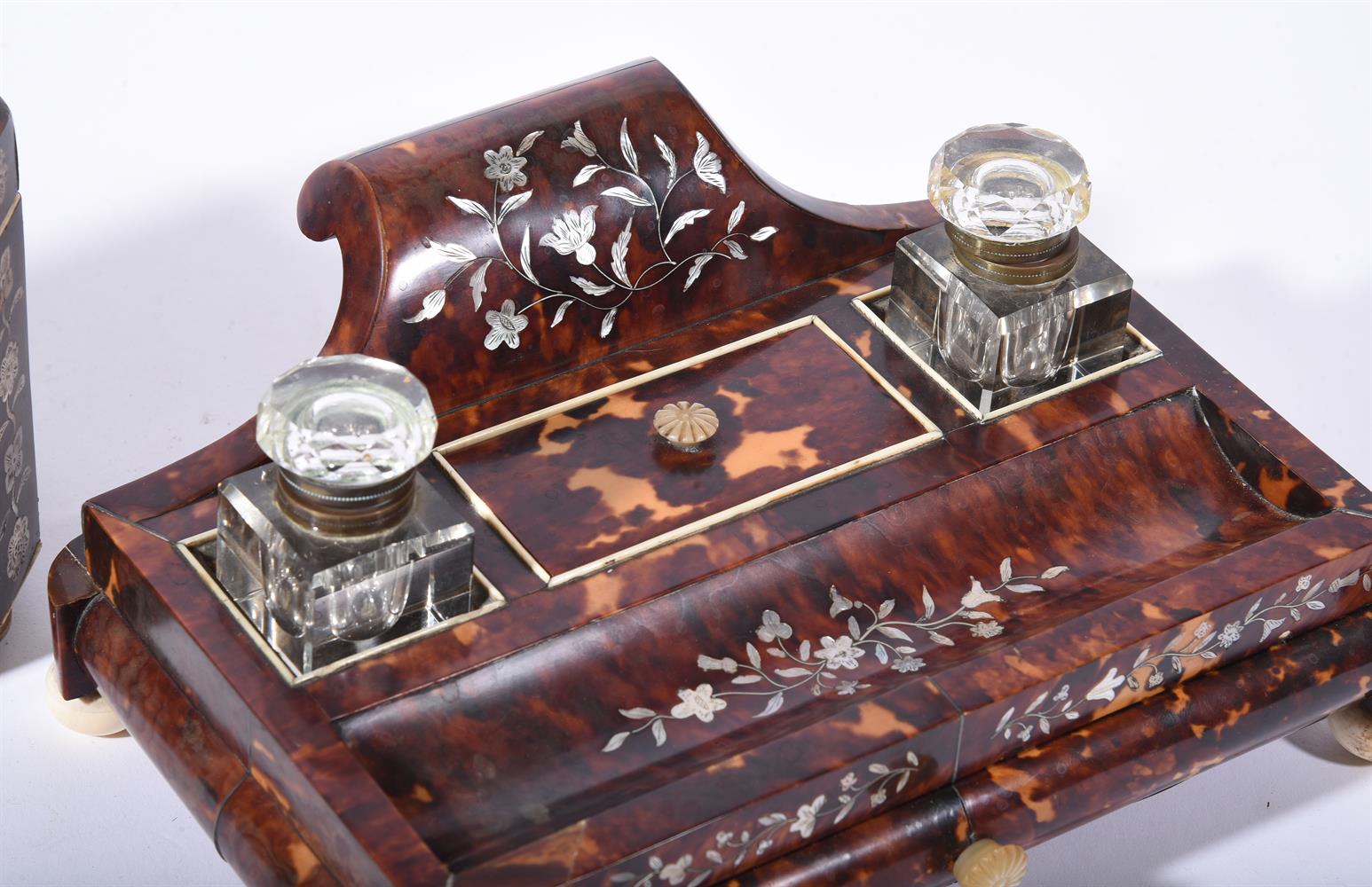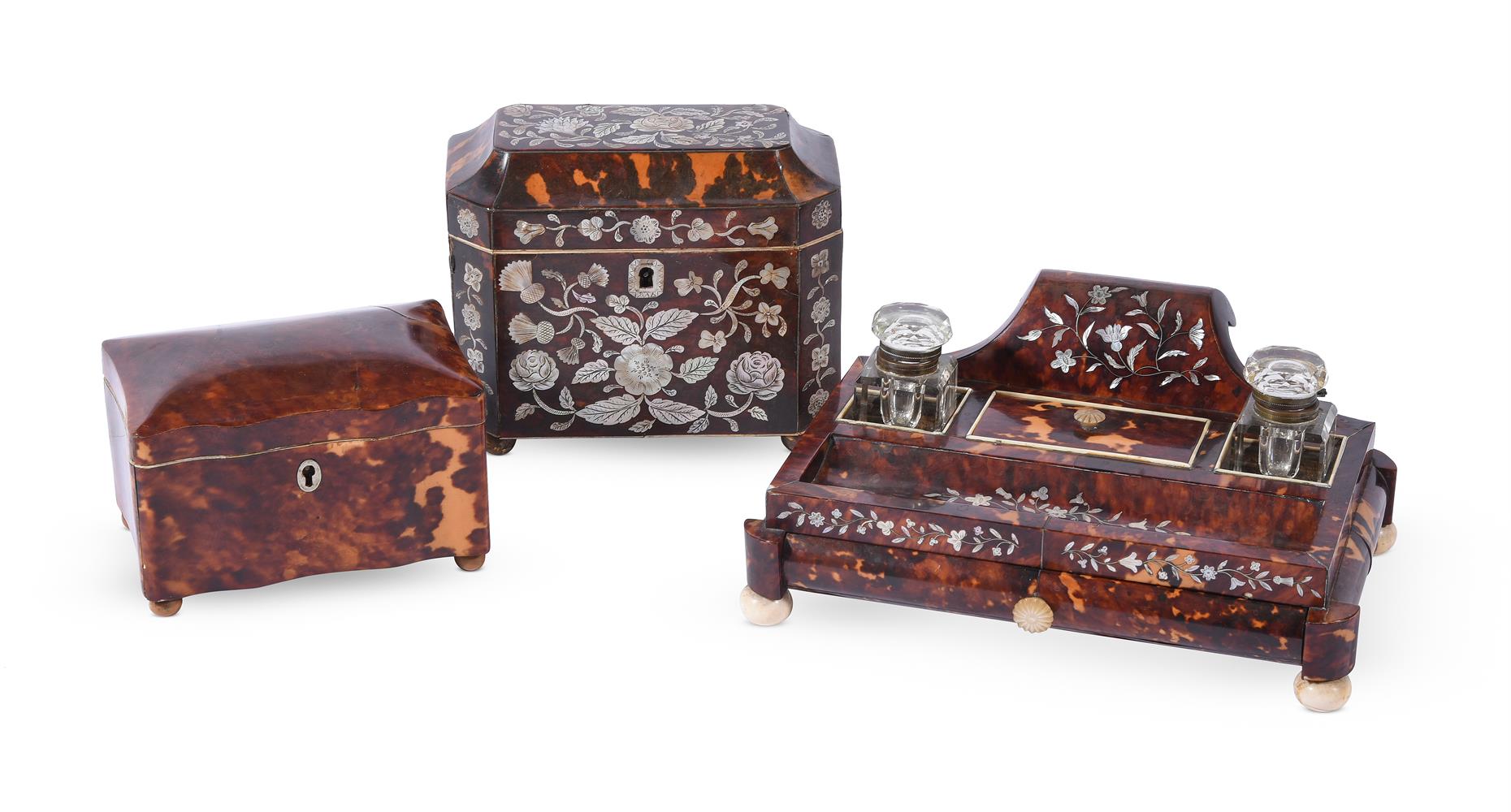TORTOISESHELL, MOTHER-OF-PEARL, CORAL AND EMERALD BLACKAMOOR BROOCH The carved dark brown tortoiseshell head with emerald earring and mother-of-pearl and orange coral hat, mounted in yellow gold, in a leather fitted case Signed by Cartier, No. P1298 The blackamoor has been an important jewelry design element since its appearance in Archaic Greek engraved gems as early as 500 B.C. It was, however, during the Renaissance that Blackamoor cameos and carvings reached their zenith, appearing on the most sumptuous and courtly jewels awarded as personal gifts of the Sovereign. Two notable examples are the Drake Jewel, given by Queen Elizabeth I in 1579, to Sir Francis Drake, probably as an award for his victory over the Spanish Armada, and the Gresley Jewel, presented as a wedding gift to Catherine Walsingham. Both jewels, now in private collections, are mounted with sardonyx Blackamoor cameos and both contain miniature portraits of the Queen by Nicholas Hilliard In the 18th Century it became fashionable to ornament the head and torso of the Blackamoor figure with necklaces, earrings and turbans to enhance the exotic look of the carving. The 19th Century brought renewed interest in the theme. The most famous of all the Revivalist jewelers, Alessandro Castellani produced a spectacular demi-parure of Blackamoor heads made of agate decorated with gold flowers rendered in filigree with the curled hair of the heads on the earrings represented with granulation. Enthusiasm for the motif continued into the 20th Century. In about 1900, Fabergé produced splendid Blackamoor heads in finely carved garnet and agate with an exceptional example, made as a stickpin, now in the Forbes Magazine Collection. In 1925, George Fouguet produced a series of brooches, clips, rings and bracelets mounted with African masks - a variation of the Blackamoor theme. Jean Schlumberger used the Blackamoor motif with great style in his objects d'art. Fulco di Verdura designed a double Blackamoor brooch each with a torso made of a large baroque pearl. The prominent Venetian jeweler, G. Nardi, produces contemporary Blackamoor jewels considered to be among the most beautiful and exotic examples of this theme, and the style has become widely associated with jewelry made in Venice. Cartier designed two extremely successful series of Blackamoor jewels - first in the 1930's and again in the 1950's. The present brooches are from the 1950 series, designed and executed with exhuberance and charm. Both male and female figures were carved in the Blackamoor motif, depicting the subject in every station from slave to emperor, from courtesan to mythological goddess, in both idealized and stylized representations. A variety of materials - agate, garnet, ebony, tortoise-shell, black coral and enamel - were used according to the inclination of the designer. The Blackamoor theme is a direct reflection of cultural interchange, always evident in jewelry, much as the Chinese, Japanese, Persian and Egyptian influences have made themselves manifest in Western decorative and applied art. This exotic and interesting jewelry theme continues to appeal to a wide and sophisticated audience and symbolizes, as French jewelry writer Sylvie Raulet points out, "... the recognition of a civilization and culture that has too long been misunderstood."
TORTOISESHELL, MOTHER-OF-PEARL, CORAL AND EMERALD BLACKAMOOR BROOCH The carved dark brown tortoiseshell head with emerald earring and mother-of-pearl and orange coral hat, mounted in yellow gold, in a leather fitted case Signed by Cartier, No. P1298 The blackamoor has been an important jewelry design element since its appearance in Archaic Greek engraved gems as early as 500 B.C. It was, however, during the Renaissance that Blackamoor cameos and carvings reached their zenith, appearing on the most sumptuous and courtly jewels awarded as personal gifts of the Sovereign. Two notable examples are the Drake Jewel, given by Queen Elizabeth I in 1579, to Sir Francis Drake, probably as an award for his victory over the Spanish Armada, and the Gresley Jewel, presented as a wedding gift to Catherine Walsingham. Both jewels, now in private collections, are mounted with sardonyx Blackamoor cameos and both contain miniature portraits of the Queen by Nicholas Hilliard In the 18th Century it became fashionable to ornament the head and torso of the Blackamoor figure with necklaces, earrings and turbans to enhance the exotic look of the carving. The 19th Century brought renewed interest in the theme. The most famous of all the Revivalist jewelers, Alessandro Castellani produced a spectacular demi-parure of Blackamoor heads made of agate decorated with gold flowers rendered in filigree with the curled hair of the heads on the earrings represented with granulation. Enthusiasm for the motif continued into the 20th Century. In about 1900, Fabergé produced splendid Blackamoor heads in finely carved garnet and agate with an exceptional example, made as a stickpin, now in the Forbes Magazine Collection. In 1925, George Fouguet produced a series of brooches, clips, rings and bracelets mounted with African masks - a variation of the Blackamoor theme. Jean Schlumberger used the Blackamoor motif with great style in his objects d'art. Fulco di Verdura designed a double Blackamoor brooch each with a torso made of a large baroque pearl. The prominent Venetian jeweler, G. Nardi, produces contemporary Blackamoor jewels considered to be among the most beautiful and exotic examples of this theme, and the style has become widely associated with jewelry made in Venice. Cartier designed two extremely successful series of Blackamoor jewels - first in the 1930's and again in the 1950's. The present brooches are from the 1950 series, designed and executed with exhuberance and charm. Both male and female figures were carved in the Blackamoor motif, depicting the subject in every station from slave to emperor, from courtesan to mythological goddess, in both idealized and stylized representations. A variety of materials - agate, garnet, ebony, tortoise-shell, black coral and enamel - were used according to the inclination of the designer. The Blackamoor theme is a direct reflection of cultural interchange, always evident in jewelry, much as the Chinese, Japanese, Persian and Egyptian influences have made themselves manifest in Western decorative and applied art. This exotic and interesting jewelry theme continues to appeal to a wide and sophisticated audience and symbolizes, as French jewelry writer Sylvie Raulet points out, "... the recognition of a civilization and culture that has too long been misunderstood."








.jpg)



Testen Sie LotSearch und seine Premium-Features 7 Tage - ohne Kosten!
Lassen Sie sich automatisch über neue Objekte in kommenden Auktionen benachrichtigen.
Suchauftrag anlegen